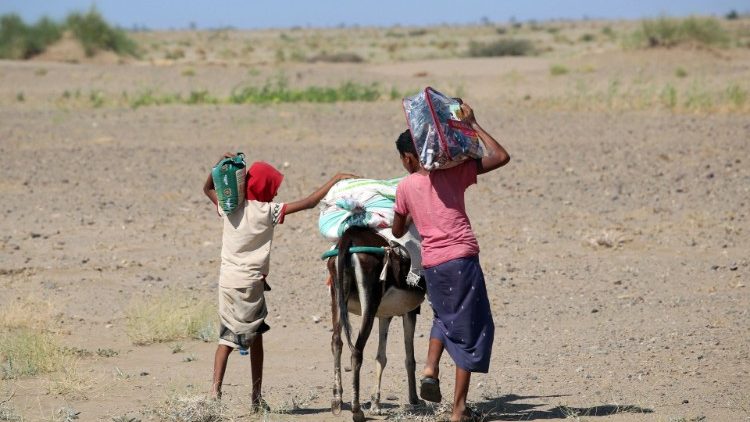The Alarming Rise in Global Hunger: A Call to Action
The latest 2025 Global Network Against Food Crises report has unveiled a troubling reality – more than 295 million people worldwide are now grappling with severe hunger. This represents a stark increase of 14 million individuals from the previous year, highlighting a deepening crisis fueled by conflict, climate-related disasters, and economic instability.
Compiled from data collected across 65 countries by various international organizations, the report sheds light on the critical levels of acute food insecurity in 53 nations. The situation is dire, with millions facing a daily struggle to secure their next meal.
By Stefano Leszczynski and Linda Bordoni
According to Aurélien Mellin from the UN’s Food and Agriculture Organization (FAO) Emergency Division, the crisis is becoming increasingly complex. “There are 35 countries that have been in a consistent state of food crisis since 2016,” Mellin explained. These protracted emergencies demand not only short-term aid but also long-term, multi-sectoral solutions that have been underfunded for years.
Despite the challenges, Mellin emphasized that effective aid delivery can lead to tangible improvements in food security over time. The key lies in choosing the right path and committing the necessary resources to address the root causes of hunger.
Conflicts: The Main Driver of Hunger
Since 2016, conflict and insecurity, extreme weather events exacerbated by climate change, and economic shocks have remained the primary drivers of food insecurity. Mellin stressed that conflict continues to have the most devastating impact on food crises worldwide.
“Conflict and insecurity are affecting the largest number of people facing food crises today,” Mellin stated. He pointed to countries like Sudan and Haiti, where violence and instability have led to famine-like conditions.
Economic factors further compound the situation, with global disruptions such as the COVID-19 pandemic and ongoing conflicts worsening economic conditions, especially in low-income and fragile states.
Children Among the Most Vulnerable
Mellin expressed concern over dwindling humanitarian funding, particularly highlighting the impact on vulnerable populations, especially children. He warned that countries like Yemen and Afghanistan are at risk of losing vital aid due to expected funding cuts, which could severely hinder life-saving assistance delivery.
The report underscores the looming threat of reduced humanitarian operations leading to a surge in hunger, especially in fragile communities where even minor shocks can trigger severe food insecurity.
A Global Call for Action
The FAO and its partners are calling on the international community to ramp up emergency and long-term support efforts. Mellin concluded by emphasizing that these crises are not insurmountable. With the right mix of aid and sustainable investment in agriculture and stability, progress can be achieved in tackling the root causes of hunger.




